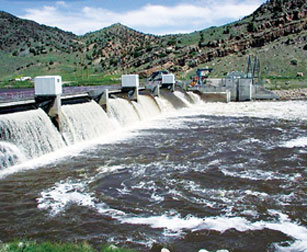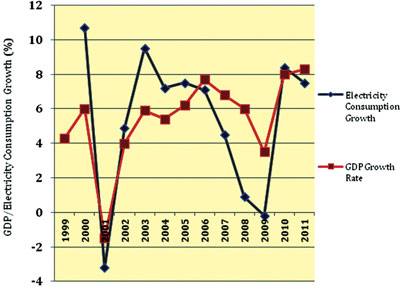Stable supply, competitive pricing policy, key to economic growth -
Verité Research
High dependability of power sector on hydro power generation and
resulting high risk of the impact on whole economy has been highlighted
by a recent research conducted by Verite Research.
 The results of the research reveal that there are three popular
explanations for the power shortage the country is experiencing today
and the resulting crisis: reduced rainfall in catchment areas,
unexpectedly high increases in demand, and shortage in capacity. The results of the research reveal that there are three popular
explanations for the power shortage the country is experiencing today
and the resulting crisis: reduced rainfall in catchment areas,
unexpectedly high increases in demand, and shortage in capacity.
Reduced rainfall in catchment areas
According to energy consultant and former Sri Lanka Electricity Board
(CEB) engineer, Thilak Siyambalapitiya, around 42 percent of the
country's power requirement can be met through hydro power but doubts
whether this year, we would be able to meet even 25 per cent of the
demand.
In 2011, the South West monsoon rainfall in the catchment areas of
hydro power reservoirs was one of the lowest recorded in the decade.
The annual rainfall recorded in hydro catchment areas was just
25,736.2 mm, which was one of the lowest recorded during the past nine
years. As a result, the sector had to rely less on hydro power. While
the reduced rainfall had affected hydro power generation, analysis
suggests that reduction in hydro power capability in 2012 may also
reflect the manner in which reservoirs capacity and water levels were
managed in 2011.
Rainfall levels in hydro catchment areas have in the past 10 years
been within the level of 25,000 mm to 30,000 mm (except for in 2010,
which had an unusually high level of rainfall).
In 2011, the rainfall levels in hydro catchment areas were even lower
than it was in 2008 and 2009. Nevertheless, the data shows that these
hydro power reservoirs may have been overused in 2011 as the hydro-power
generated in 2011 was higher than that generated in 2008 and 2009,
despite the much lower rainfall and water collection.
 The effect of over-exploiting the reservoirs in 2011 resulted in a
lower starting water levels in 2012, which could have been a
contributing factor to the current shortage of power. The effect of over-exploiting the reservoirs in 2011 resulted in a
lower starting water levels in 2012, which could have been a
contributing factor to the current shortage of power.
Growth in GDP and unexpected demand
From 2000 to 2011 GDP growth in Sri Lanka was at an average rate of
5.8 percent. Electricity demand grew at a slower rate of 4.8 percent
over the same period. The rate of growth in electricity lead in the
first half of the decade and lagged in the second half. Therefore, the
shortage of power, cannot be explained on the basis of unexpectedly high
demand in recent years.
The research points out the slow growth in the generation capacity.
The CEB has been slow to increase generation capacity. As a result, the
demand for power has been met principally through Independent Power
Producers (IPPs). The average power generated by IPPs in the last decade
has increased by 211 percent, whereas the CEB has increased its
generation by only 24 percent. Of the total increase in power generation
from 2002 to 2011; the CEB accounted for just over one third (36
percent) and IPPs the rest.
Share of capacity
During 2001-2003, the average power generated by the CEB accounted
for 77 percent of the total; and IPPs accounted for only 23 percent. In
contrast eight years later (2009-2011), the average power generated by
CEB was down to 57 percent of the total and IPPs provided the balance 43
percent.
 Nevertheless, the lag (in relation to GDP) in the rate of growth of
electricity consumed in the recent years cannot be attributed to
shortages in capacity. While the average demand for electricity
consumption had grown at a rate of 4.8 percent per year in the last
eleven years, the total installed capacity (both CEB and private) had
grown at a higher average rate of 5.3 percent. Nevertheless, the lag (in relation to GDP) in the rate of growth of
electricity consumed in the recent years cannot be attributed to
shortages in capacity. While the average demand for electricity
consumption had grown at a rate of 4.8 percent per year in the last
eleven years, the total installed capacity (both CEB and private) had
grown at a higher average rate of 5.3 percent.
The increase in electricity supply and demand is strongly correlated
with GDP growth.
Therefore, economists use growth in the demand for electricity as an
alternate measurement of GDP growth, when available formal measures are
weak.
What is not always clear is the direction of causation between growth
in electricity supply and GDP - the perennial question of the chicken or
the egg. However, a stable supply of adequate power and a
well-structured internationally competitive pricing policy are key
elements of long-term economic growth.
|


